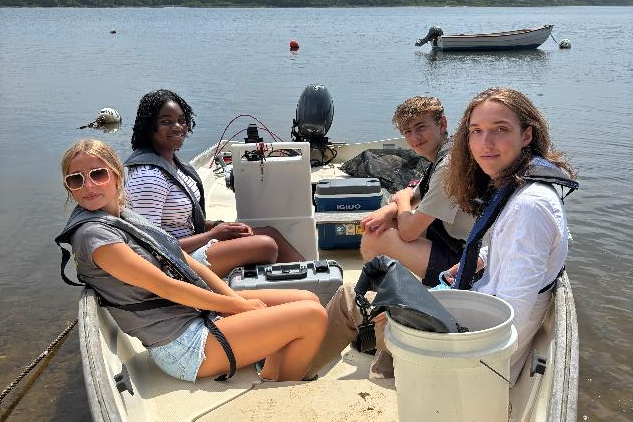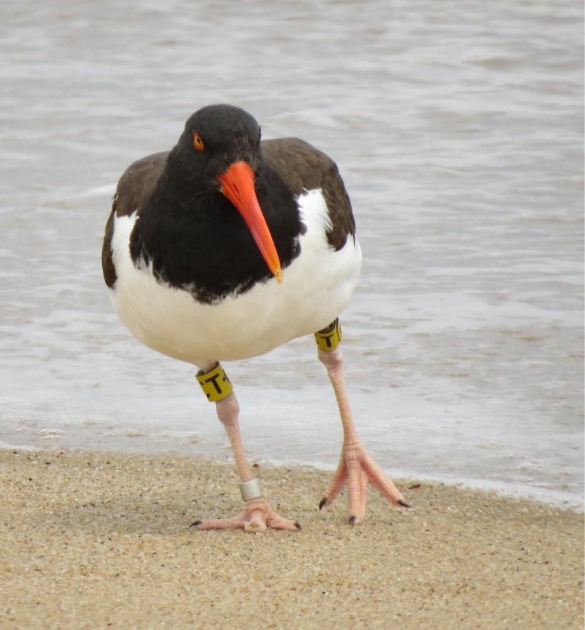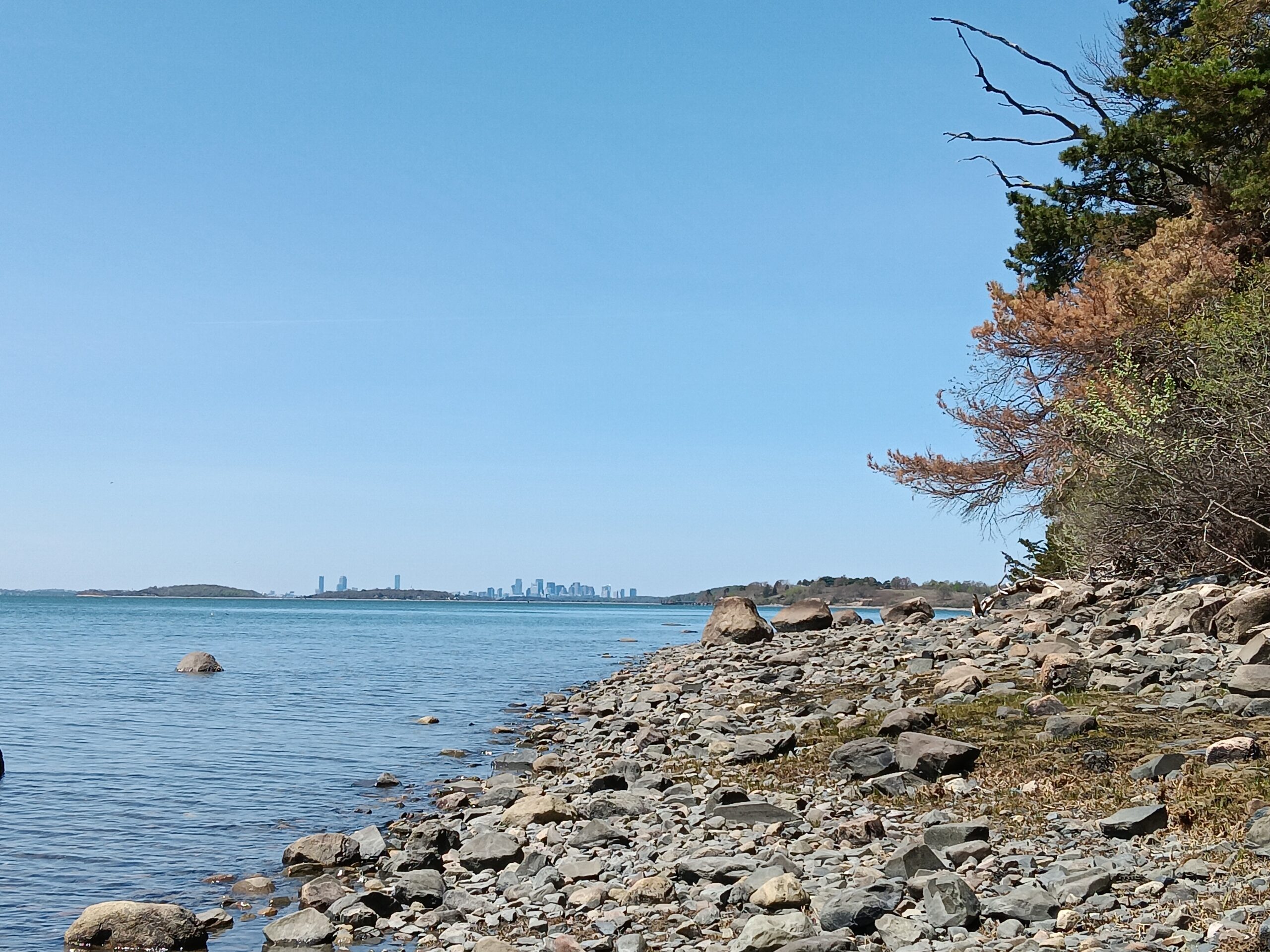
The Great Marsh
The Trustees and partners are working to restore more than 1,300 acres of salt marsh in Newbury, Essex, and Ipswich using innovative nature-based methods such as ditch remediation and runnel digging. The Great Marsh is New England’s largest salt marsh. At 16,000 acres, the Great Marsh provides habitat, stores carbon, provides world-class birding, and protects communities from storms and flooding.
This summer, the Trustees was lucky enough to have a seasonal employee, Hunter, and an intern, Owen, join the team that is helping to restore the Great Marsh. The Trustees is excited to offer young people the chance to learn at our properties through a variety of jobs and opportunities. Hear about Hunter and Owen’s work in their own words below.
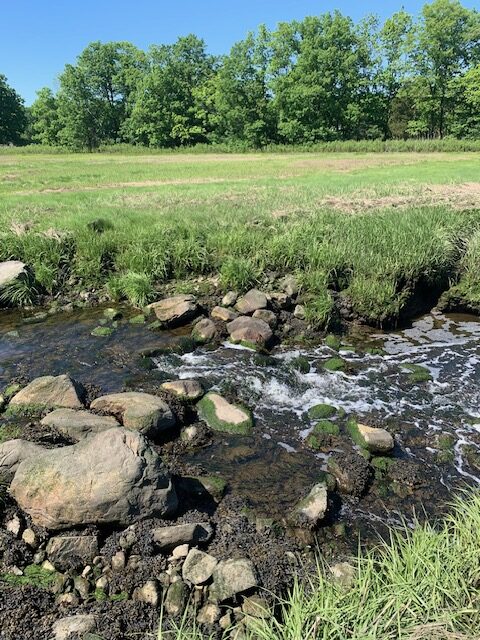
Scenes of the Great Marsh
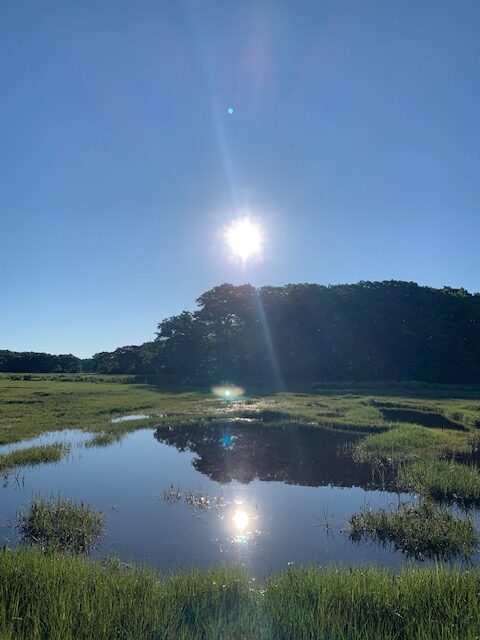
What brought you to The Trustees? What is your background?
Hunter (H): I got my undergraduate degree in Ecology and Evolutionary Biology, and my master’s degree in Biodiversity and Conservation Biology from the University of Connecticut, so species and habitat conservation are interests of mine.
I was interested in expanding my species detection skills further into the animal kingdom and expanding my restoration experience to marshes.
Owen (O): Russ Hopping, Lead Coastal Ecologist, and I worked together to create an internship that would satisfy both of our needs. As a student with a distinct love for nature who grew up in Gloucester and loves spending the summers here, an organization like The Trustees is perfect for me. I have extensive work experience in landscaping and coursework in ecology and conservation.
What excites you about our work on the Great Marsh?
H: The Great Marsh is a very exciting place. Such small changes in elevation throughout the marsh make it a beautiful mosaic of pools and plants.
The care taken by the Trustees to restore the degrading parcels of marsh to support the species that need it for survival is exciting to see. Large scale management is necessary for success, but it is rare for these projects to be taken on when outcomes are uncertain. It seems many organizations often get intimidated by managing such a large area, but the Trustees are going for it. Being a part of that, even in a small way, is awesome.
O: In general, I am very interested in restoration work. With the Great Marsh being such a critical ecosystem, and one that I grew up near, this whole project appeals to me. This is a huge, large-scale project spanning years and years, and I’m very grateful to have the chance to be a part of it.
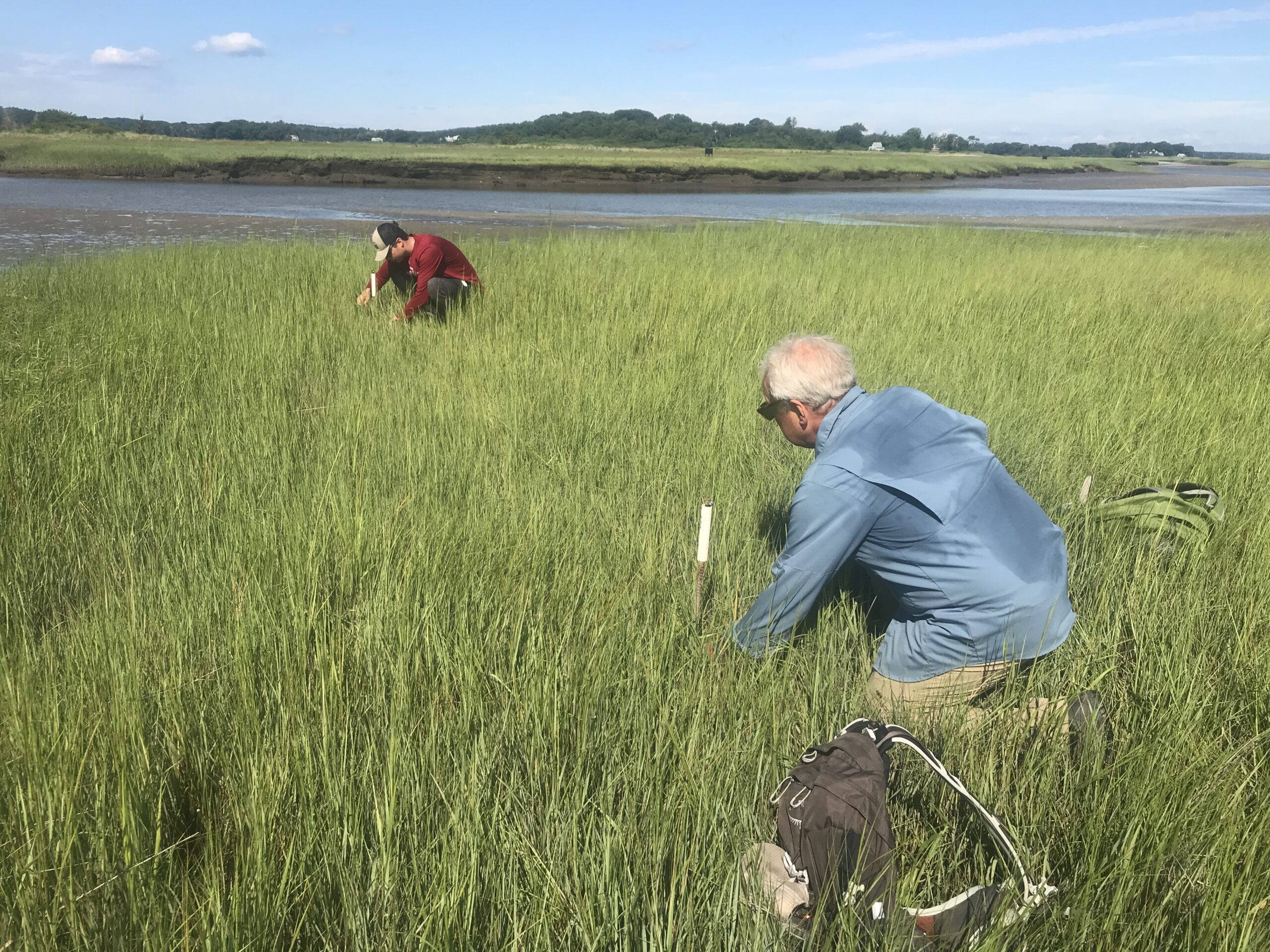
Lead coastal ecologist Russ Hopping works alongside Owen and Hunter on the Great Marsh
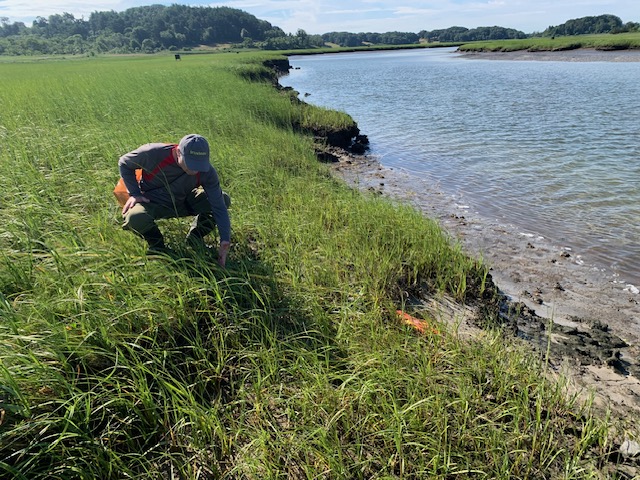
Spending a summer on the Great Marsh

When it comes to restoration work, what are you most passionate about or interested in?
H: At the Trustees, I get to monitor the progress of restoration by looking at the species present and the characteristics of the land itself. I am passionate about collecting data that informs future restoration efforts. Data drives science, so being a part of the mechanism that allows the restoration work to continue is so exciting.
O: I am passionate about wildlife. On the marsh, this mostly applies to birds. Before this internship, I had experience working with birds, but this position has taken my knowledge of and interest in birds to a new level. Protecting this vital ecosystem and the beautiful wildlife that inhabits it is a necessary priority.
What are your priorities in your role this summer?
H: The priorities for my role include surveying the birds that use the marsh to see if there are any changes to their activity and abundance (especially the saltmarsh sparrows), monitoring water sources in marshes where restoration work is being carried out to see if restoration work affects mosquito habitat, and examining the ditches and runnels in the marsh that have been managed to check the progress of the restoration projects and see if any interventions need to be made.
O: I’ve spent a lot of time in the field over the last couple months and learned a lot about what a potential career in ecology and conservation might look like. I’ve spent time with knowledgeable ecologists, learning as much from them as possible.
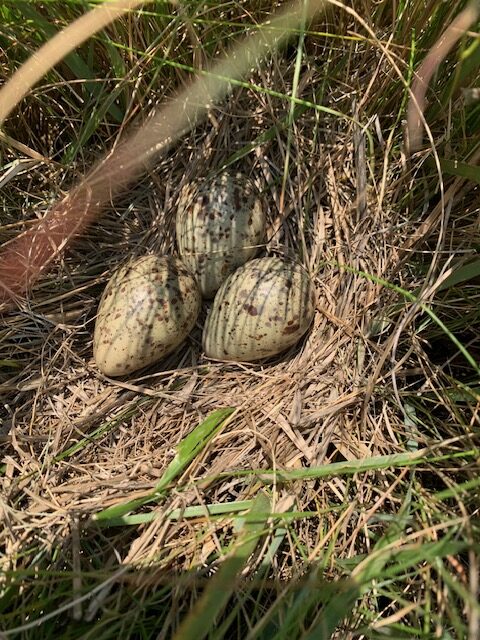
Photos taken by Owen while working on the Great Marsh
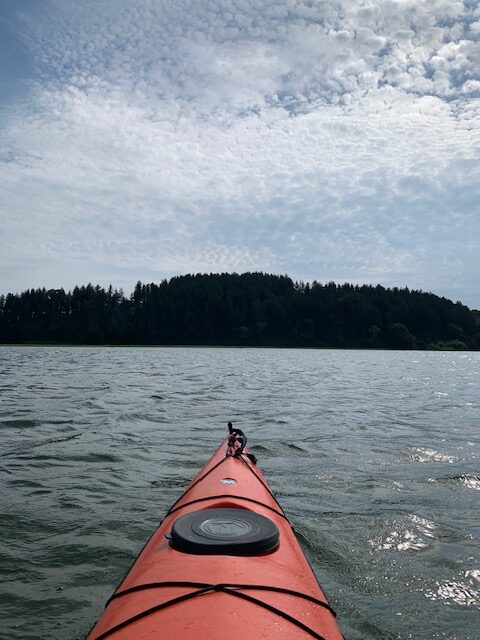
If someone asked “Why should I care about marsh restoration?” what would you say?
O: As the largest salt marsh in New England and an area of critical environmental concern, the Great Marsh is a very important ecosystem. Although many people don’t realize it, the marsh provides many key resources to the area, including food, recreation, habitat for wildlife, immense carbon sequestration, and protection from sea level rise and storm surge events.
Apart from this, I would hope that most people feel a general sense of responsibility to conserve natural ecosystems. If people don’t care about marsh restoration for the sake of the ecosystem and organisms impacted by it, they at least should for the sake of our local coastal communities.
If someone had no idea what our work looks like on the Great Marsh, how would you explain it to them?
H: The Trustees marsh work encompasses many areas of concern. The physical condition of the marsh, particularly how water flows through it, is monitored to see if there are any areas where excessive pooling occurs (which means the water isn’t flowing right and this part of the marsh may begin to decay as the plants that live there drown and die).
Once plans have been drawn up and permissions from the appropriate agencies have been acquired, the digging of runnels or remediation of ditches (basically encouraging ditches to fill in) begins. These runnels and remediated ditches help restore water levels to encourage marsh grass growth. This grass growth is what builds a marsh upward to keep pace with rising sea levels and provides habitat for birds, particularly saltmarsh sparrows.
Areas where management occurs are heavily monitored to see if progress is going in the right direction (which it largely is) and to see what strategies work best. This marsh work is at the cutting edge of marsh conservation at such a large scale.
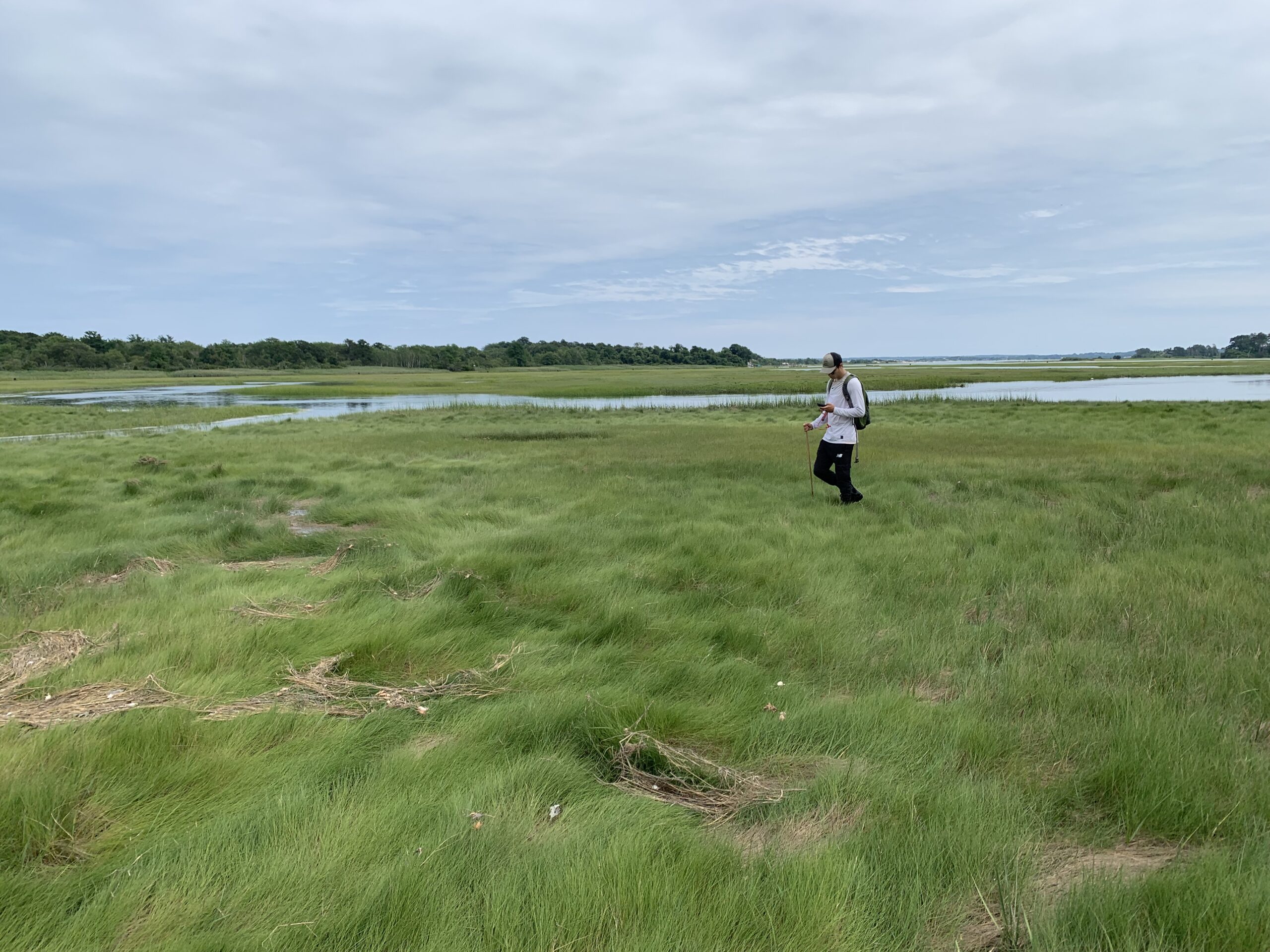
Photos taken by Hunter while working on the Great Marsh
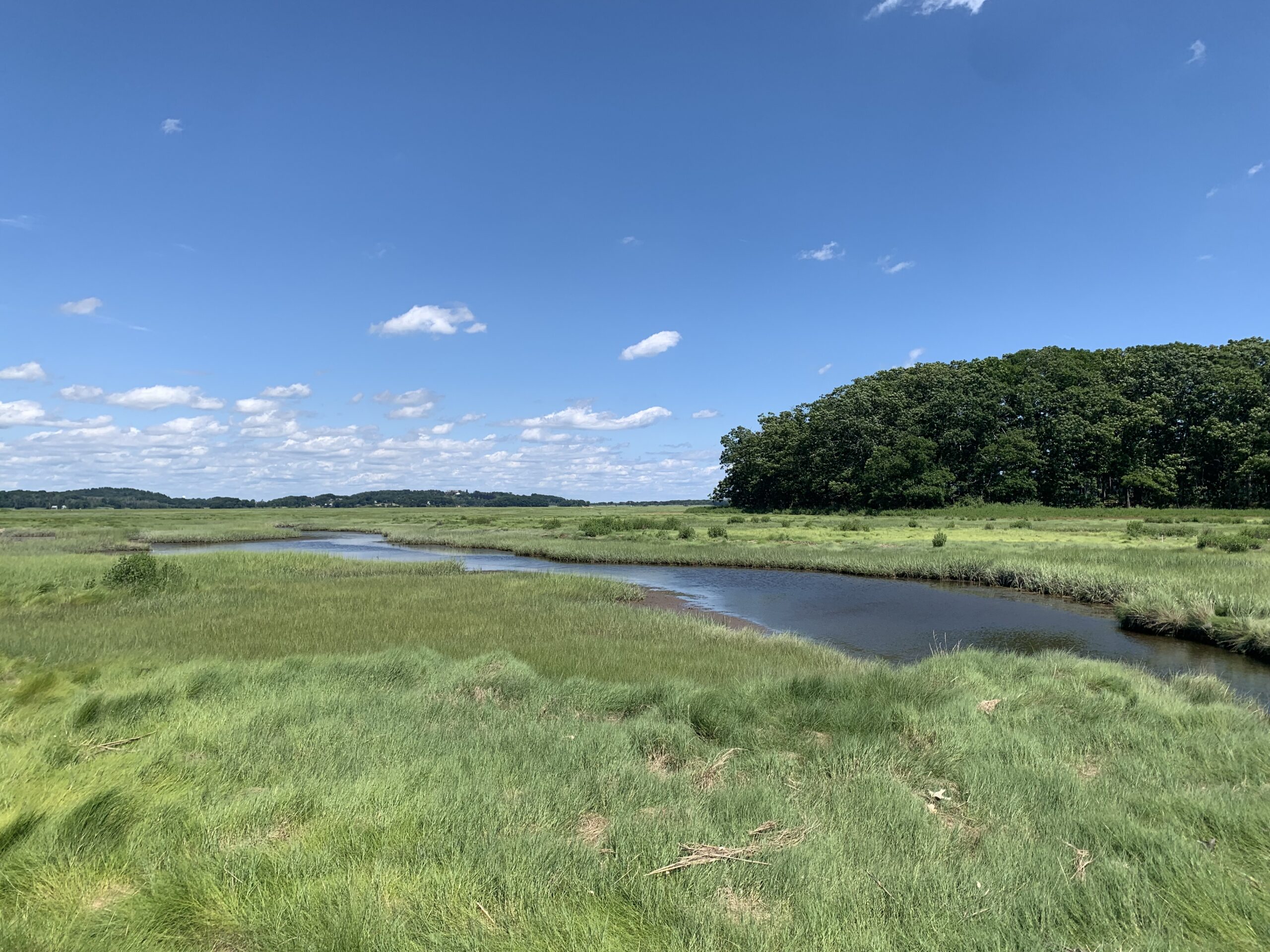
Do you have a favorite Trustees Property?
H: I love so many of the Trustees Properties, but my favorite is Hamlin Reservation. There is so much wildlife (including many saltmarsh sparrows, egrets, rails, hawks, toads and fish) and plant life there to see. The trail is also very easy to walk and has fantastic views of the marsh.
O: I spent a lot of time this summer at Crane, which is a beautiful property. We have also been over to Hamlin Reservation many times, which deserves a shoutout.
I would say that my favorite Trustees property is Coolidge Reservation. It’s such an amazing place to go have a picnic, go for a walk, or just hang out. Ravenswood Park is another awesome Trustees property in Gloucester that I’ve spent a lot of time at throughout the years.
What do you enjoy doing when you’re not at work?
H: I enjoy gardening and keeping my house plants happy, being on the beach and in the water, talking with friends, and watching wildlife.
O: I like to stay active by lifting weights, hiking, exploring, swimming, and playing sports. I like to spend as much time outdoors as possible, especially in the summer when the weather is nice.

